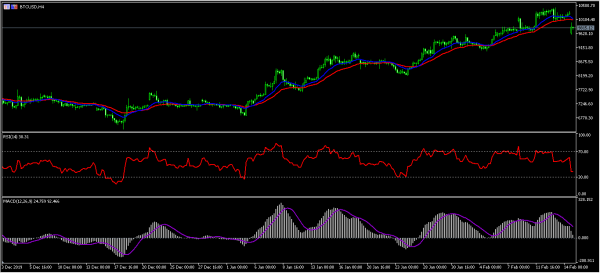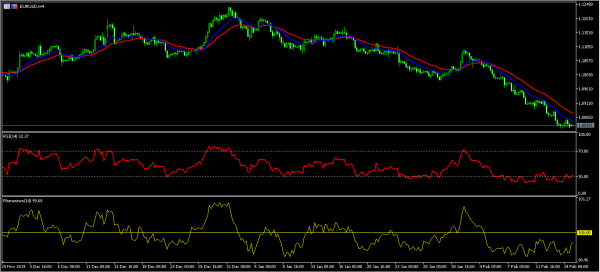Chinese stocks rose today as the market remained optimistic about the ongoing coronavirus epidemic. This is after the rate of fatalities fell during the weekend. According to the National Health Commission, the number of reported new cases was 2,048. 105 people died in the previous 24 hours. This brings the total number of infections and deaths to more than 70,500 and 1,770 respectively. According to the New York Times, many Chinese cities have been in lockdown this year. As a result, many manufacturers have either halted or slowed down production. This could have a negative impact on the Chinese and global economy.
The Japanese yen eased slightly after the country released weak economic data. The second fourth quarter preliminary GDP data came in at -1.6%. This was lower than the expected decline of -0.9% and the previous gain of 0.1%. It was also the worst economic performance since 2014. The economic growth declined by -6.3% on an annual basis. This drop was caused by a decline in private consumption and capital expenditure. Capital expenditure declined by 3.7% in the quarter while private consumption declined by 2.9%. These two were offset by a slight improvement of external demand. These numbers came a few months after the country embarked on a $122 billion stimulus plan.
The US dollar was relatively unchanged as the market reacted to the mixed January retail sales. In January, retail sales rose by 0.3%, which was slightly better than December’s 0.2%. In total, sales rose by 4.38% in the previous 12 months. Core retail sales, which measures the performance of retail sales excluding volatile food and energy products, rose by 0.3% in January. The retail control was unchanged. Meanwhile, industrial production declined for the fourth time in the past five months. This was attributed to the overall warm weather and a halt in Boeing’s production of 737 Max. The total industrial production declined by 0.3% in January from the previous month.
EUR/USD
The EUR/USD pair was little changed during the Asian session. The pair has been consolidating at the current level since Thursday last week. It is trading at 1.0837, which is close to the lowest level since July 2017. The RSI is slightly above the oversold level of 30 on the four-hour chart. The price is slightly below the 14-day and 28-day exponential moving averages. The momentum indicator has remained below 100. At this stage, the pair may continue moving lower. Also, a reversal is possible.
BTC/USD
The BTC/USD pair declined below 10,000. The currency has been on an upward trend that saw it move above $10,000 this month. It reached a high of $10,500. On the four-hour chart, the short and medium-term moving averages are starting to make a crossover. The RSI has moved from above 70 to 38. The signal and histogram of the MACD are moving lower. The pair may continue to move lower in the short term.
USD/CHF
The USD/CHF pair has been on an upward trend since January 16 when it was trading at 0.9610. The pair reached a high of 0.9828 today. This is the highest level since December last year. The price is along the 50% Fibonacci Retracement level. The price is above the 14-day and 28-day EMA. The RSI has been moving upwards and is close to the oversold level of 70. The pair may continue moving upwards to test the 61.8% Fibonacci level of 0.9865.












